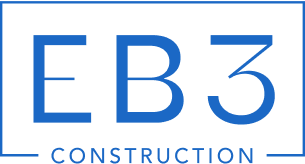Location decisions carry higher stakes than most developers realize. A well-positioned site can reduce construction costs by 15-25% while accelerating project timelines, yet a poor choice can trap capital in underperforming assets for decades.
Commercial construction site selection services provide the structured due diligence that guides property owners from initial site screening through final purchase decisions. We evaluate market demand patterns, infrastructure readiness, regulatory constraints, and financial feasibility to ensure each site aligns with specific project goals and long-term profitability expectations.
Which Market, Access, And Amenity Factors Should You Evaluate First?

Market research forms the foundation of smart site selection. We start by examining population growth patterns and economic stability indicators in target areas. Growing populations signal sustained demand for both residential and commercial development. Economic stability includes employment rates, median income levels, and industry diversity.
Demographics drive development success. We analyze age distributions, household sizes, and income brackets to match project types with local needs. Areas with young professionals support mixed-use developments. Family-oriented neighborhoods favor single-family housing and retail centers.
Accessibility Analysis
Transportation access determines site viability for most projects. We evaluate proximity to major highways and arterial roads that handle substantial traffic volumes. Sites within two miles of interstate interchanges typically command premium values for commercial development.
Public transit connectivity expands market reach significantly. We assess bus routes, rail stations, and planned transportation improvements. Properties near transit hubs often support higher density development and attract tenants seeking reduced parking requirements.
Airport access matters for certain project types. Industrial and office developments benefit from proximity to regional airports for logistics and business travel. We typically evaluate sites within a 30-minute drive of major airports for these uses.
Infrastructure Requirements
Existing utilities reduce development costs and accelerate project timelines. We verify water and sewer capacity to support planned density. Electrical service availability and capacity directly impact industrial and data center projects.
Internet and telecommunications infrastructure increasingly drives site selection. We confirm fiber optic access and broadband speeds for office and mixed-use developments. Sites lacking high-speed internet require additional investment for infrastructure upgrades.
Utility coordination becomes critical when existing systems need expansion. We work with local providers to understand capacity limitations and upgrade requirements. This analysis helps avoid costly delays during construction.
Amenity Evaluation
Nearby amenities enhance property values and tenant appeal. For residential projects, we assess school districts, parks, recreational facilities, and shopping centers within walking or short driving distance. Quality schools particularly influence family housing demand.
Commercial projects benefit from different amenity sets. We evaluate access to business districts, dining options, hotels, and entertainment venues. Office tenants value nearby restaurants and services for employees. Retail developments thrive near complementary businesses that create shopping destinations.
Healthcare facilities, banks, and post offices represent essential services that support both residential and commercial developments. We map these amenities to understand the convenience factor for future occupants.
Sites lacking key infrastructure or amenities require additional investment and extended development timelines. We factor these costs into preliminary project budgets to ensure accurate feasibility analysis. Infrastructure gaps can transform an attractively priced site into a financial burden without proper planning.
How Do Zoning, Land Use, And Environmental Conditions Affect Buildability?
Zoning represents the first regulatory hurdle every development faces. We confirm that the site’s current zoning classification aligns with your intended use before moving forward. Local governments categorize land into residential, commercial, industrial, and special-use districts, each carrying specific restrictions on building types, heights, and densities.
Height restrictions can significantly impact buildable square footage and project economics. Setback requirements dictate how far structures must sit from property lines, reducing the effective buildable area. We identify any easements that may restrict construction or access, as these permanent rights can eliminate portions of your site from development consideration.
Understanding Protected Areas And Rezoning Requirements
Protected natural areas, historic districts, or environmentally sensitive zones may limit or prohibit development entirely. When the existing zoning doesn’t match your project requirements, rezoning becomes necessary but adds months to your timeline and thousands in application costs.
The rezoning process requires planning commission review, public hearings, and city council approval. We prepare preliminary site plans and demonstrate how your project aligns with the municipality’s comprehensive plan. Success rates vary significantly by location and project type, making early assessment critical for project viability.
Geotechnical Surveys Reveal Site Conditions
Soil composition, load-bearing capacity, and drainage patterns determine foundation design and construction methods. We order geotechnical surveys to identify expansive soils, rock formations, or underground water that could require specialized foundation systems or dewatering during construction.
Topography affects grading costs and stormwater management requirements. Sites with significant slopes may need extensive earthwork, retaining walls, or stepped building designs. Poor drainage can mandate costly stormwater infrastructure or limit development density under local regulations.
Environmental Risk Assessment Prevents Future Problems
Flood risk assessment protects against future damage and insurance complications. Properties in FEMA flood zones face building code restrictions, elevated foundation requirements, and higher insurance premiums that affect long-term operating costs.
We screen for seismic activity zones, which may require enhanced structural design and specialized construction techniques. Environmental assessments identify contaminated soil, underground storage tanks, or hazardous materials that trigger cleanup requirements before construction can begin.
Sensitive habitats like wetlands, endangered species areas, or migratory bird corridors can halt development entirely. Federal and state environmental regulations may require impact studies, mitigation measures, or development restrictions that fundamentally change project feasibility. Early identification prevents costly surprises during the permitting phase.
What Due Diligence And Analytics Improve Decisions During Site Screening?

Advanced analytics transform site screening from guesswork into strategic decision-making. We employ logistics modeling to map supply chain flows and establish an efficient search radius around potential sites. This modeling reveals transportation costs, delivery times, and distribution patterns that directly impact operational expenses and construction schedules.
Labor analytics provide critical insights into workforce availability and cost structures across different markets. We examine local unemployment rates, wage trends, and the presence of skilled trades to predict labor costs and project staffing challenges. Sites located near established construction markets typically offer better access to experienced crews and competitive pricing.
Infrastructure And Utility Assessment
Power availability and quality analysis reveals whether existing electrical infrastructure can support construction operations and future occupancy needs. We evaluate transformer capacity, voltage stability, and utility company expansion plans. Poor power quality can delay construction and increase long-term operational costs significantly.
Infrastructure requirements extend beyond basic utilities to include telecommunications, natural gas, and specialized systems. We assess the proximity of high-speed internet connections, which many tenants now consider essential. Sites requiring extensive utility extensions face both higher costs and extended development timelines.
Cost Analysis And Permitting Review
Site preparation costs vary dramatically based on topography, soil conditions, and existing structures. We analyze grading requirements, demolition needs, and environmental remediation costs to establish realistic preparation budgets. Sites with challenging soil conditions or contamination issues require additional engineering and regulatory coordination.
Permitting analysis examines local approval processes, typical review timelines, and fee structures. We track permit application requirements, review board schedules, and approval success rates for similar projects. Some jurisdictions offer expedited processes for certain project types, which can reduce development schedules by months.
| Factor | Description | Considerations |
|---|---|---|
| Logistics | Proximity to transportation networks and market reach | Evaluate connection to highways, rail, ports, and airports; consider last-mile logistics |
| Labor | Availability and skill level of workforce | Assess local unemployment rates, wage trends, and skill availability |
| Infrastructure | Existing utility and connectivity provisions | Examine power, water, and digital infrastructure; consider utility expansion needs |
| Regulatory | Zoning and environmental compliance | Confirm zoning is compatible; check for environmental restrictions |
Sustainability And LEED Considerations
LEED certification requirements increasingly influence site selection decisions. We evaluate access to public transit, which contributes to sustainable site credits under LEED rating systems. Sites with established transit connections reduce parking requirements and appeal to environmentally conscious tenants.
Wetlands sensitivity and renewable energy potential affect both regulatory compliance and sustainability goals. We conduct preliminary environmental screenings to identify protected habitats or sensitive ecosystems that could complicate development. Sites with solar exposure or wind resources offer opportunities for renewable energy integration.
Comprehensive Cost Benchmarking
We develop standardized cost comparisons across shortlisted sites to enable direct evaluation. This includes land acquisition costs, site preparation expenses, utility connection fees, and permitting costs. Construction feasibility studies estimate foundation requirements, structural systems, and accessibility improvements for each location.
Vendor access evaluation examines the availability of materials suppliers, equipment rental companies, and specialized contractors. Sites in established construction markets benefit from competitive pricing and reliable supply chains. Remote locations may face premium pricing for materials delivery and equipment mobilization.
Waste management infrastructure affects both construction operations and ongoing facility operations. We assess local disposal facilities, recycling programs, and hazardous waste handling capabilities. Sites with limited waste management options require alternative arrangements that increase operational costs and environmental impact.
How Should Incentives And Financial Analysis Shape ROI Expectations?
Acquisition and development costs form only part of the financial equation. We balance these expenses against available government incentives to accurately project ROI and determine financial feasibility. Expected returns from rent, property appreciation, and operational savings create the foundation for investment decisions.
Federal Tax Credit Programs
Federal tax credits provide substantial financial advantages for qualifying projects. New Markets Tax Credits offer 39% of qualified equity investments over seven years, primarily targeting low-income communities and underserved areas. Historic Tax Credits deliver 20% of qualified rehabilitation expenditures for certified historic structures undergoing approved restoration.
Investment Tax Credits apply to renewable energy installations, providing up to 30% of system costs for solar, wind, and geothermal projects. We evaluate these credits during site selection to determine which locations can accommodate qualifying improvements and maximize available benefits.
State And Local Incentive Options
State and local programs often provide more immediate financial relief than federal options. Job creation tax credits reward projects that meet employment targets within specific timeframes. Training grants offset workforce development costs, particularly valuable in markets with skilled labor shortages.
Tax Increment Financing (TIF) districts capture increased property tax revenue from development to fund infrastructure improvements. Capital investment credits reduce state tax liability based on equipment purchases and facility construction costs. We research these programs early in site screening to identify locations where incentive stacking opportunities exist.
Utility Discounts And PACE Financing
Utility rate discounts for water and electric service reduce ongoing operational costs. Some utilities offer reduced rates for large consumers or energy-efficient facilities, improving long-term cash flow projections. We coordinate with utility providers to confirm availability and qualification requirements before finalizing site selection.
Property Assessed Clean Energy (PACE) financing allows property owners to fund energy improvements through special assessments repaid over extended periods. PACE programs can account for 30% to 70% of project equity, making energy-efficient construction more financially viable without traditional financing constraints.
Financial Analysis Methods
Lease-versus-buy analysis determines the most cost-effective approach for site acquisition. We calculate present value of lease payments against purchase costs, including financing, maintenance, and disposal expenses. Tax structuring considerations influence ownership arrangements and entity selection to optimize incentive utilization.
Highest-and-best-use analysis evaluates alternative development scenarios for each site. This process identifies the most profitable use given zoning constraints, market demand, and available incentives. We model different project types to determine which approach generates superior returns.
| Program Type | Description | Example Programs |
|---|---|---|
| Tax Credits | Reductions in tax payments based on job creation, investment, or specific developments. | New Markets Tax Credits, Historic Tax Credits |
| Cash Grants/Loans | Direct payments or loans provided to offset project costs, with some offering forgiveness. | Cash grants in Texas, Federal Housing Administration (FHA) Loans |
| Utility Discounts | Reduced rates for utilities like electricity and water, often for large consumers or efficient facilities. | PACE Financing |
| Property Tax Abatements | Reduction or elimination of property taxes to incentivize development. | Enterprise Zone Tax Credit |
| State and Local Incentives | Programs offering financial relief, job creation credits, or training grants at state and local levels. | Job Development Credits, Tax Increment Financing (TIF) |
Development cost estimates for shortlisted sites enable accurate financial comparisons. We prepare detailed cost breakdowns including site preparation, infrastructure connections, construction expenses, and permitting fees. These estimates incorporate available incentives to show net project costs and projected returns for each location under consideration.
Conclusion And Next Steps

Effective site selection protects construction investments and positions projects for sustainable success. We coordinate market demand analysis with access requirements to identify locations that support both immediate operations and future growth potential.
Comprehensive due diligence protects development timelines and budgets. We verify zoning compatibility through detailed regulatory research and conduct geotechnical surveys to prevent costly surprises during construction. Environmental assessments help us identify potential compliance issues before they become project delays. Our logistics modeling evaluates labor availability, vendor access, and supply chain efficiency to ensure smooth project execution.
Financial analysis guides informed decision-making throughout the site selection process. We balance acquisition costs against available government incentives and assess ROI potential through detailed cash flow projections. Tax credit programs, PACE financing, and utility rate discounts often provide substantial savings that improve project feasibility. Our structured evaluation process enables accurate cost comparisons between shortlisted sites to support confident investment decisions.
Contact EB3 Construction to develop a comprehensive site selection strategy for your next development project.




